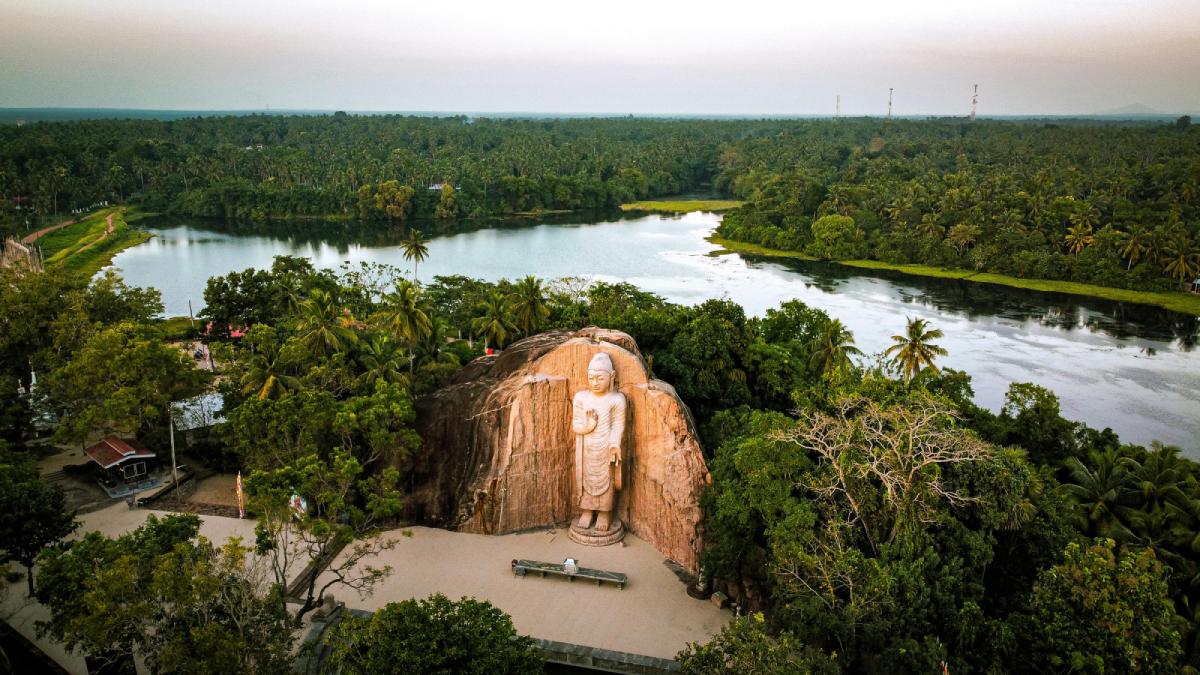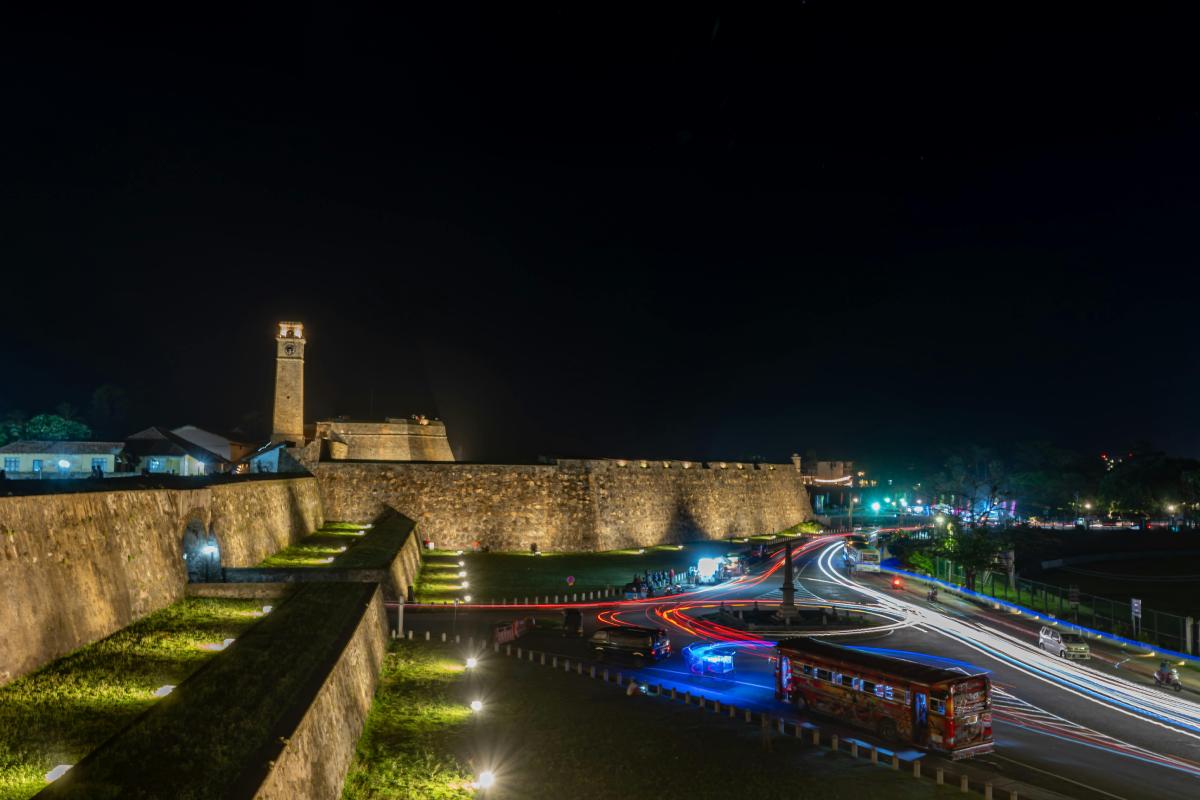Discover the untamed beauty and thrilling adventures that await at one of Sri Lanka’s best-kept coastal secrets.
Introduction Kalpitiya Beach Adventure and Tranquility
Nestled along Sri Lanka‘s northwestern coast, Kalpitiya Beach stands as a testament to nature’s unspoiled beauty. This peninsular paradise, approximately 170 kilometers north of Colombo, has quietly transformed from a sleepy fishing village into one of the island nation’s most exciting yet underrated beach destinations. Unlike the tourist-heavy southern shores, Kalpitiya offers visitors a rare blend of adventure, tranquility, and authentic Sri Lankan coastal culture.
What makes Kalpitiya truly special is its remarkable diversity of experiences, from world-class kitesurfing conditions that draw enthusiasts from across the globe to the gentle giants of the ocean—dolphins and whales—that grace its waters throughout the year. With its pristine beaches, vibrant coral reefs, and rustic charm, Kalpitiya represents Sri Lanka at its most genuine and captivating.
In this comprehensive guide, we’ll explore everything you need to know about visiting this hidden gem, from the best times to visit and activities to experience, to accommodation options and practical travel tips. Whether you’re an adventure seeker, nature lover, or simply someone looking to escape the beaten path, Kalpitiya Beach promises an unforgettable Sri Lankan coastal experience.
Geographic Features and Natural Beauty
Kalpitiya is not just a single beach but a collection of 14 islands and a peninsula that stretches between the Puttalam Lagoon and the Indian Ocean. This unique geographic positioning creates diverse ecosystems within close proximity—from expansive sand dunes and mangrove forests to salt flats and the azure waters of the Indian Ocean.
The main beach extends along the western coast of the peninsula, characterized by its golden-brown sand and relatively calm waters. Unlike the crashing waves found elsewhere in Sri Lanka, the Kalpitiya shoreline often presents a more serene seascape, particularly during the non-monsoon months. The beach itself remains largely undeveloped, with fishing boats dotting the coastline and palm trees swaying in the gentle sea breeze.
What truly sets Kalpitiya apart is its remarkable marine biodiversity. The waters surrounding the peninsula are home to vibrant coral reefs, especially around Bar Reef, which is considered one of the largest coral reef systems in Sri Lanka. These underwater ecosystems support a rich array of marine life, from colorful reef fish to larger pelagic species, making it a paradise for snorkelers and divers alike.
The Puttalam Lagoon side offers another dimension to Kalpitiya’s natural splendor, with its tranquil waters, mangrove forests, and diverse birdlife. These mangroves serve as crucial nurseries for marine life and provide protection against coastal erosion, highlighting the ecological importance of this often-overlooked region.
Best Time to Visit
Kalpitiya’s climate is dictated by two distinct monsoon seasons, which in turn create ideal conditions for different activities throughout the year:
Kitesurfing Season (May to October)
The southwest monsoon brings strong and consistent winds to Kalpitiya, creating perfect conditions for kitesurfing and other wind-dependent water sports. The peak kitesurfing months are typically:
- May to July: When winds reach their maximum strength, often averaging 20-25 knots
- August to October: Slightly milder winds but still excellent for kitesurfing
During this period, the skies might occasionally be cloudy, but rainfall is generally limited to short spells, rarely interfering with outdoor activities.
Dolphin and Whale Watching Season (November to April)
The northeast monsoon brings calmer seas and clearer waters, making it ideal for:
- Dolphin watching: Spinner dolphins are present year-round but are most easily spotted during these months
- Whale watching: Blue whales and sperm whales migrate through these waters, particularly from December to March
- Diving and snorkeling: Visibility is at its best, often exceeding 20 meters
For those seeking a balance of activities and optimal weather conditions, the transition months of November and April can offer the best of both worlds—moderate winds for kitesurfing and clear waters for marine exploration.
Adventure Activities
Kalpitiya has earned its reputation as Sri Lanka’s adventure capital, offering a variety of exhilarating experiences for thrill-seekers:
Kitesurfing
Kalpitiya has firmly established itself as one of Asia’s premier kitesurfing destinations. The combination of consistent winds, large lagoon areas, and open ocean access creates a versatile playground for kite enthusiasts of all levels. The region boasts several kitesurfing schools offering:
- Professional instruction for beginners
- Equipment rental for experienced kiters
- Downwinders and kite safaris to explore remote spots
- Advanced coaching for freestyle and wave riding techniques
The lagoon’s shallow, flat water is perfect for beginners, while the ocean side offers waves for more experienced riders seeking jumps and surf-style riding.
Dolphin and Whale Watching
Perhaps Kalpitiya’s most magical experience is encountering dolphins in their natural habitat. The waters off Kalpitiya are home to super-pods of spinner dolphins, often numbering in the thousands. These acrobatic mammals are known for their playful behavior, including their namesake spinning leaps out of the water.
Whale watching expeditions venture further offshore, where blue whales—the largest animals on earth—and sperm whales can be spotted during their migratory season. Unlike more commercialized whale-watching destinations, Kalpitiya offers a more intimate experience with fewer boats, creating less disturbance for these magnificent creatures.
Scuba Diving and Snorkeling
The Bar Reef Marine Sanctuary, located approximately 2 kilometers offshore, represents one of Sri Lanka’s most diverse coral reef systems. Diving or snorkeling here reveals:
- Over 150 species of coral
- More than 280 species of reef fish
- Sea turtles, reef sharks, and rays
- Visibility often reaching 20+ meters during peak season
Several dive centers operate in Kalpitiya, offering everything from introductory dives for beginners to advanced exploration for certified divers. The relatively uncrowded dive sites provide a more serene underwater experience compared to more popular diving destinations.
Stand-Up Paddleboarding (SUP)
The calm waters of the lagoon create perfect conditions for stand-up paddleboarding, an increasingly popular activity in Kalpitiya. SUP tours often explore the mangrove ecosystems, offering a peaceful way to observe birdlife and experience the lagoon’s tranquility at sunrise or sunset.
Cultural Experiences
Beyond its natural attractions, Kalpitiya offers visitors a glimpse into authentic Sri Lankan coastal life:
Fishing Villages
The peninsula is dotted with traditional fishing communities where generations of families have drawn their livelihood from the sea. Early morning visits to fish landing sites provide fascinating insights into traditional fishing methods that have remained largely unchanged for centuries.
Some guesthouses and tour operators arrange interactive fishing experiences where visitors can join local fishermen in their daily activities, from casting nets to bringing in the day’s catch.
Dutch Colonial Heritage
Kalpitiya’s strategic location made it an important outpost during the Dutch colonial era. The Dutch Fort, built in 1676, stands as testament to this historical significance. Though partially in ruins, the fort’s remaining structures offer a glimpse into the region’s colonial past.
The St. Peter’s Kerk church within the fort complex dates back to 1706 and represents one of Sri Lanka’s oldest Protestant churches. Its simple architecture contrasts with the more elaborate Portuguese and British colonial buildings found elsewhere on the island.
Local Cuisine
The unique blend of cultural influences and abundant seafood has created a distinctive culinary tradition in Kalpitiya. Local specialties include:
- Fresh lagoon crab curry with distinctive northern Sri Lankan spices
- “Ambulthiyal” (sour fish curry) prepared with locally caught tuna
- Spicy prawn curries using prawns harvested from the lagoon
- “Kottu roti” with a coastal twist, often incorporating seafood
Many guesthouses offer authentic home-cooked meals, while a growing number of beachside restaurants serve both local and international cuisine, often featuring the day’s fresh catch.
Accommodation Options
Kalpitiya’s accommodation landscape reflects its development as an eco-conscious destination, with options ranging from basic to luxurious:
Eco-Resorts and Glamping
Several eco-resorts have established themselves along the peninsula, offering environmentally sensitive accommodation that blends with the natural surroundings. These typically feature:
- Cabanas or safari tents constructed using local materials
- Open-air bathrooms with solar-heated water
- Common areas designed for socializing and relaxation
- Direct beach access or lagoon views
Notable eco-resorts include Elements Beach & Nature Resort, Dolphin Beach Resort, and Bar Reef Resort, each offering their own interpretation of sustainable luxury.
Kitesurfing Camps
Dedicated kitesurfing camps cater specifically to wind sports enthusiasts, combining accommodation with equipment storage, rental services, and instruction. These camps typically foster a community atmosphere where kite enthusiasts from around the world share experiences and tips.
The camps range from basic budget options with shared facilities to more comfortable setups with private cabanas and modern amenities. Most are strategically located for easy access to prime kitesurfing spots.
Boutique Hotels and Guesthouses
For those seeking more traditional accommodation, several boutique hotels and family-run guesthouses offer comfortable rooms, personalized service, and authentic local experiences. These often provide the best opportunity to connect with local hosts and gain insights into the area’s culture and traditions.
Sustainable Tourism Initiatives
As Kalpitiya develops as a tourist destination, several initiatives aim to ensure this growth remains sustainable and benefits local communities:
Marine Conservation Projects
Various organizations work to protect Kalpitiya’s marine ecosystems through:
- Coral restoration programs
- Beach cleanup campaigns
- Research on dolphin populations and behavior
- Sustainable fishing advocacy
Visitors can often participate in these conservation efforts through volunteer programs or educational tours that raise awareness about marine protection.
Community-Based Tourism
Many accommodations and tour operators in Kalpitiya have embraced community-based tourism models that:
- Employ local staff and guides
- Source ingredients from local farmers and fishermen
- Support local craftspeople by showcasing their products
- Contribute to community development projects
These initiatives help ensure that tourism benefits are distributed throughout the community rather than concentrated among a few business owners.
Practical Travel Information
Getting There
Reaching Kalpitiya requires some effort, which helps explain its relatively untouched nature:
- From Colombo: The journey takes approximately 3.5-4 hours by car, passing through Negombo and Puttalam.
- Public Transportation: Buses run from Colombo to Puttalam, from where tuk-tuks or local buses can take you to Kalpitiya town and the beach areas.
- Airport: The closest international airport is Bandaranaike International Airport in Colombo, though some domestic seaplane services occasionally operate to Kalpitiya during peak tourist season.
Local Transportation
Within Kalpitiya, transportation options include:
- Tuk-tuks (three-wheelers) for short distances
- Motorbike rentals from some guesthouses and shops
- Bicycles, perfect for exploring the flat terrain of the peninsula
- Boat transfers to the islands and remote beaches
Essential Items to Pack
When visiting Kalpitiya, consider packing:
- Reef-safe sunscreen (essential for protecting both your skin and the coral reefs)
- Insect repellent (especially for evenings near the lagoon)
- Light, breathable clothing for the tropical climate
- Rash guard or wetsuit if planning water activities
- Cash (ATM facilities are limited in the area)
Conclusion
Kalpitiya Beach represents Sri Lanka at its most authentic and diverse—a place where adventure activities and serene natural experiences coexist with traditional coastal communities. Its relative obscurity compared to the island’s southern beaches has preserved its character and prevented the overdevelopment seen elsewhere.
For travelers seeking an off-the-beaten-path destination that offers world-class kitesurfing, remarkable marine encounters, and genuine cultural experiences, Kalpitiya delivers in abundance. As sustainable tourism practices take root, there’s hope that this hidden gem will develop thoughtfully, maintaining the delicate balance between accessibility and preservation.
Whether you’re gliding across the lagoon’s surface on a kiteboard, swimming alongside playful dolphins, or simply watching fishermen bring in their daily catch as the sun sets over the Indian Ocean, Kalpitiya offers memories that epitomize the magic of Sri Lanka’s northwestern coast. In a world of increasingly homogenized tourist experiences, Kalpitiya stands proudly apart—wild, authentic, and utterly captivating.


